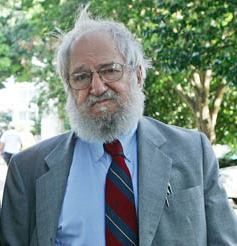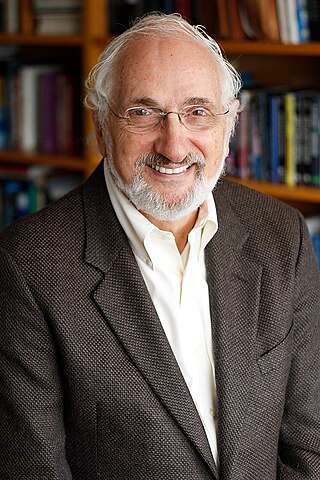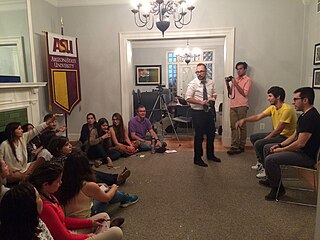
Playmobil is a German line of toys produced by the Brandstätter Group, headquartered in Zirndorf, Germany. The signature Playmobil toy is a 7.5 cm (3.0 in) tall human figure with a smiling face. A wide range of accessories, buildings and vehicles, as well as many sorts of animals, are also part of the Playmobil line.
Creativity techniques are methods that encourage creative actions, whether in the arts or sciences. They focus on a variety of aspects of creativity, including techniques for idea generation and divergent thinking, methods of re-framing problems, changes in the affective environment and so on. They can be used as part of problem solving, artistic expression, or therapy.
Synectics is a problem solving methodology that stimulates thought processes of which the subject may be unaware. This method was developed by George M. Prince (1918–2009) and William J.J. Gordon, originating in the Arthur D. Little Invention Design Unit in the 1950s.
Decision analysis (DA) is the discipline comprising the philosophy, methodology, and professional practice necessary to address important decisions in a formal manner. Decision analysis includes many procedures, methods, and tools for identifying, clearly representing, and formally assessing important aspects of a decision; for prescribing a recommended course of action by applying the maximum expected-utility axiom to a well-formed representation of the decision; and for translating the formal representation of a decision and its corresponding recommendation into insight for the decision maker, and other corporate and non-corporate stakeholders.

Constructionist learning is the creation by learners of mental models to understand the world around them. Constructionism advocates student-centered, discovery learning where students use what they already know to acquire more knowledge. Students learn through participation in project-based learning where they make connections between different ideas and areas of knowledge facilitated by the teacher through coaching rather than using lectures or step-by-step guidance. Further, constructionism holds that learning can happen most effectively when people are active in making tangible objects in the real world. In this sense, constructionism is connected with experiential learning and builds on Jean Piaget's epistemological theory of constructivism.

Design management is a field of inquiry that uses design, strategy, project management and supply chain techniques to control a creative process, support a culture of creativity, and build a structure and organization for design. The objective of design management is to develop and maintain an efficient business environment in which an organization can achieve its strategic and mission goals through design. Design management is a comprehensive activity at all levels of business, from the discovery phase to the execution phase. "Simply put, design management is the business side of design. Design management encompasses the ongoing processes, business decisions, and strategies that enable innovation and create effectively-designed products, services, communications, environments, and brands that enhance our quality of life and provide organizational success." The discipline of design management overlaps with marketing management, operations management, and strategic management.
Clean language is a technique primarily used in counseling, psychotherapy and coaching but now also used in education, business, organisational change and health. It has been applied as a research interview technique called clean language interviewing.

Laboratory automation is a multi-disciplinary strategy to research, develop, optimize and capitalize on technologies in the laboratory that enable new and improved processes. Laboratory automation professionals are academic, commercial and government researchers, scientists and engineers who conduct research and develop new technologies to increase productivity, elevate experimental data quality, reduce lab process cycle times, or enable experimentation that otherwise would be impossible.
The following outline is provided as an overview of and topical guide to marketing:
Business war gaming or business wargaming is an adaptation of the art of simulating moves and counter-moves in a commercial setting. In a complex global and competitive world, formulating a plan without testing it against likely external reactions is the equivalent of walking into a battlefield without the right weapons or a plan to win. In situations where the cost of being wrong is high, war games can be very helpful to understand from a 360-degree perspective the external opportunities and challenges of all the key stakeholders in the industry.
Macroscope is an integrated set of methods aimed at enterprise IT activities. Macroscope was developed and is maintained by Fujitsu in Canada. It is primarily used as their core body of knowledge to support the consulting services that they provide to their clients and is also licensed as a commercial product to a number of their clients
Living labs are open innovation ecosystems in real-life environments using iterative feedback processes throughout a lifecycle approach of an innovation to create sustainable impact. They focus on co-creation, rapid prototyping & testing and scaling-up innovations & businesses, providing joint-value to the involved stakeholders. In this context, living labs operate as intermediaries/orchestrators among citizens, research organisations, companies and government agencies/levels.
Gareth Morgan is a British/Canadian organizational theorist, management consultant and Distinguished Research Professor at York University in Toronto. He is known as creator of the "organisational metaphor" concept and writer of the 1979 book Sociological Paradigms and Organizational Analysis with Gibson Burrell and the 1986 best-seller Images of Organization.
Causal Layered Analysis (CLA) is a future research theory that integrates various epistemic modes, creates spaces for alternative futures, and consists of four layers: Litany, Social and Structural, Worldview, and Myth/Metaphor. The method was created by Sohail Inayatullah, a Pakistani-Australian futures studies researcher.

Jerry (Yoram) Wind is The Lauder Professor and Professor of Marketing at The Wharton School of the University of Pennsylvania, and is the founding director of the Wharton "think tank,” The SEI Center for Advanced Studies in Management.
Johan Roos is a Swedish organizational theorist known for his work on intellectual capital and measuring the intellectual performance of companies. He currently serves as Chief Strategy Officer at Hult International Business School, previously having served as President of Copenhagen Business School and Dean of the Stockholm School of Economics.

The term serious play refers to an array of playful inquiry and innovation methods that serve as vehicles for complex problem-solving, typically in work-related contexts. Lego Serious Play is one of the best known examples; however, serious play methods also include improv theater, role play exercises, low fidelity prototyping, as well as certain simulations and gamification interventions, etc.

Problem structuring methods (PSMs) are a group of techniques used to model or to map the nature or structure of a situation or state of affairs that some people want to change. PSMs are usually used by a group of people in collaboration to create a consensus about, or at least to facilitate negotiations about, what needs to change. Some widely adopted PSMs include

Howard Yu is a Hong Kong-born academic and author who is the LEGO professor of management and innovation at IMD Business School. He has been the director of the IMD's Center for Future Readiness since 2020. He is also the director of Advanced Management Program (AMP) and Future Readiness Strategy (FRS) open program of IMD.









